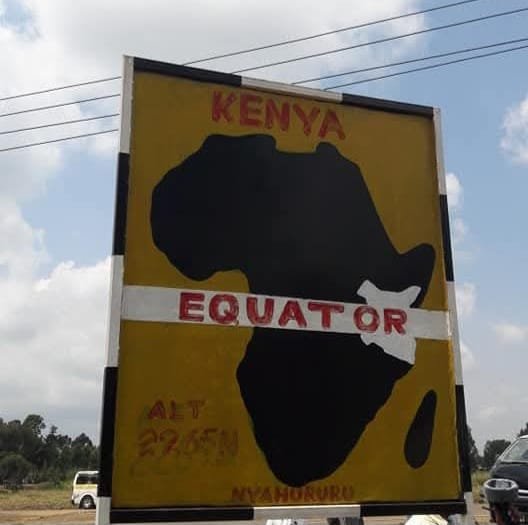CHAPTER 3 JAMBO FOLKS
From Acacias to Flamingos: A Journey Through Kenya’s Wild Heart
After a memorable stay at Siena Springs Camp, we packed our bags and hit the road toward Lake Elementaita. I claimed the front seat, camera in hand, firing away random questions at Moses, our ever-patient guide, who answered each one with enthusiasm and warmth.
As we drove, the scenery began to shift. The iconic flat-topped Acacias and Mara trees started to thin out, making way for the striking yellow-barked Acacia, also known as the fever tree or Naivasha thorn. These trees are fascinating; not only do they perform photosynthesis through their bark, but they also help maintain the water table. Local tradition holds that their roots, when brewed, help new mothers regain their strength after childbirth. We also passed by groves of whistling thorn acacias, trees that house ants in a fascinating symbiotic relationship. Take it from me: steer clear unless you want to get swarmed!
Soon, we reached Lake Naivasha, a freshwater gem and the highest-elevation lake in the Kenyan Rift Valley. Its name, Nai’posha in Maasai, means “rough water,” though on this particular day, the lake was anything but. It looked calm and still, almost serene. Our boatman, David, helped us aboard, and we set off across the water.
The lake was a haven for birdlife – huge pelicans struck dramatic poses, while ducks and geese floated by like royalty. Barren trees stood silently in the middle of the lake, and I couldn’t help but click away. My cousin teased me, saying my obsession with photographing trees against open skies was a classic “only child” trait. Maybe there’s some truth to it!
David gave us a heads-up and tossed a fish into the lake. Within seconds, a majestic eagle soared from a distant tree, circled above us, then swooped down and snatched the fish with incredible precision. This mini-show repeated a few times and never got old.
Then came the unforgettable moment- a bloat of hippos surfaced, their eyes, ears, and nostrils just peeking above the water. Although they’re herbivores, their sheer size and numbers made the moment spine-tingling. A few even emerged fully, as if striking a pose for our cameras.
Boating done, we continued to our overnight stop: Lake Elementaita Cottages. The lake stretched wide, bordered by misty mountains. Our cottage sat just 20 feet from the water’s edge, an idyllic spot if there ever was one.
However, lunch came with an unexpected guest: flies, zillions of them. They swarmed like mosquitoes, landing on our plates and faces. I had to eat with my mouth shut (Sujith probably appreciated the quiet). The hotel staff reassured us that they were harmless, but that didn’t stop one uncle from spraying mosquito repellent as if it were perfume. Caught in the spray zone, I was liberally sprayed upon. He turned to me, proudly pointing at his wrist gadget, and said, “This creates a safety zone. Africa is a dangerous place.” To be fair, it worked; we could finally enjoy our food.
We tried Ugali, a Kenyan staple made from maize flour. It reminded me of Karnataka’s Raagi mudde, though paler in color. Let’s just say… it was an acquired taste.
As the drizzle set in, we armed ourselves with a broken umbrella (from the cottage), camera, and binoculars, and walked along the lake’s edge. Across the water, flocks of pink flamingos shimmered in the distance, visible only through binoculars. They were expected to fly closer by morning.
And fly they did.
At dawn, we stood in awe as the flamingos drifted across the lake, their soft pink feathers glowing against the early light. The camera couldn’t do justice to the moment. Grebes floated nearby, and blue-spotted doves cooed from the cottage rooftops.
Next on our itinerary: the Equator Line and Thomson’s Falls, followed by an overnight stay in Nairobi. The drive from Elementaita took us through a series of small towns – Gilgil, Ntule, Kekiyoupe, and Nyandarua. The roads wound through barley and maize fields, children waved from the roadside, and local markets buzzed with life. Donkey carts ambled past, while colorful fruit and veggie stalls lined the streets. Fun fact: the tomatoes here are incredibly sweet, I genuinely considered buying for home!
I need to tell you my friends, the cacti here are so giant, they grow like trees. I was particularly attracted to one shaped like a candelabra, and Moses said it was called the candelabra cactus. I was thinking of a similar one planted in my home in a small pot, not giving it enough space to grow immensely!
Moses chuckled when I compared it to the poor, stunted one growing in a tiny pot back home.
Eventually, we reached Nyahururu town and Nandi County, home to the iconic Equator Line. We watched the classic experiment where water spins clockwise in the Northern Hemisphere and counterclockwise in the Southern Hemisphere, and stands still on the Equator. Tourists scrambled to film it, and yes, I got the certificate for crossing the Equator (you never outgrow souvenirs).
Sujith and I stood on either side of the Equator line, holding hands and laughing as others followed suit. After some hard bargaining and shopping for tribal art (my house is slowly becoming a mini-Africa), we ended the day with steaming chai and local banter.
Our final stop: Thomson’s Falls, where we would break for lunch and soak in the dramatic beauty of Kenya, once again.
Coming up next: Exotic meat tasting and milk-gulping elephants and thorn-tackling giraffes


